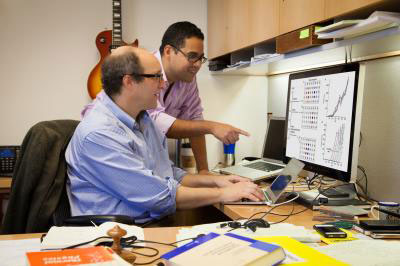 A new theoretical model may hold the key to methods for developing better materials for solar cells. The scientists say the model could lead to new solar cell materials made from improved blends of semiconducting polymers and fullerenes.
A new theoretical model may hold the key to methods for developing better materials for solar cells. The scientists say the model could lead to new solar cell materials made from improved blends of semiconducting polymers and fullerenes.
Jan 29th, 2014
Read more
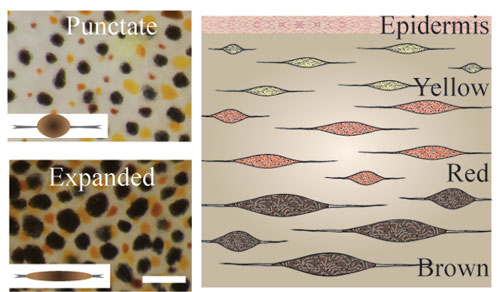 Cuttlefish may offer model for bioinspired human camouflage and color-changing products.
Cuttlefish may offer model for bioinspired human camouflage and color-changing products.
Jan 29th, 2014
Read more
 Researchers have shown that free-base and nickel porphyrin-diaminopurine conjugates are formed by hydrogen-bond-directed assembly on single-stranded oligothymidine templates of different lengths into helical multiporphyrin nanoassemblies. The nanoassemblies have highly modular structural and chiroptical properties.
Researchers have shown that free-base and nickel porphyrin-diaminopurine conjugates are formed by hydrogen-bond-directed assembly on single-stranded oligothymidine templates of different lengths into helical multiporphyrin nanoassemblies. The nanoassemblies have highly modular structural and chiroptical properties.
Jan 29th, 2014
Read more
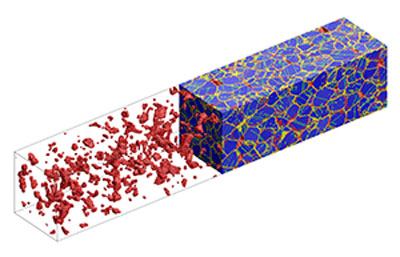 Molecular dynamics simulations reveal the mechanisms by which metal nanowires deform or break under strain.
Molecular dynamics simulations reveal the mechanisms by which metal nanowires deform or break under strain.
Jan 29th, 2014
Read more
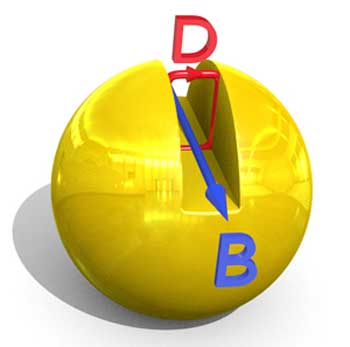 An array of perfect nanometer-scale spheres that can control the flow of visible light may find use in invisibility cloaks.
An array of perfect nanometer-scale spheres that can control the flow of visible light may find use in invisibility cloaks.
Jan 29th, 2014
Read more
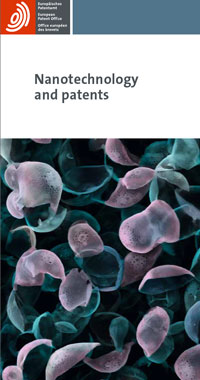 A new brochure explains how to get started if you want to search for nanotechnology inventions in patent databases, and what to look out for if you are thinking about applying to the European Patent Office for a nanotechnology patent yourself.
A new brochure explains how to get started if you want to search for nanotechnology inventions in patent databases, and what to look out for if you are thinking about applying to the European Patent Office for a nanotechnology patent yourself.
Jan 28th, 2014
Read more
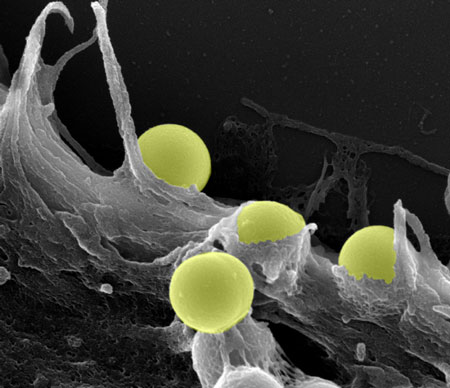 Many of the most exciting frontiers in biomedical research sound like the stuff of science fiction, but here's some work that even looks like it's straight from the set of Star Trek! This scanning electron micrograph captures the pivotal moment when nanospheres - a futuristic approach to drug delivery - are swallowed up by a human fibroblast cell.
Many of the most exciting frontiers in biomedical research sound like the stuff of science fiction, but here's some work that even looks like it's straight from the set of Star Trek! This scanning electron micrograph captures the pivotal moment when nanospheres - a futuristic approach to drug delivery - are swallowed up by a human fibroblast cell.
Jan 28th, 2014
Read more
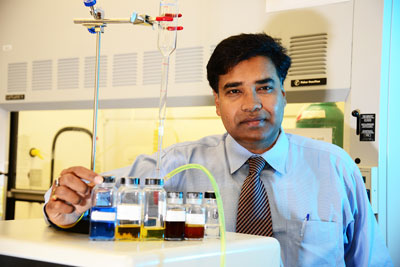 The University of Central Florida's NanoScience Center is developing a new program to make a graphene-based spray coating that would help multiple industries easily and inexpensively fight corrosion.
The University of Central Florida's NanoScience Center is developing a new program to make a graphene-based spray coating that would help multiple industries easily and inexpensively fight corrosion.
Jan 28th, 2014
Read more
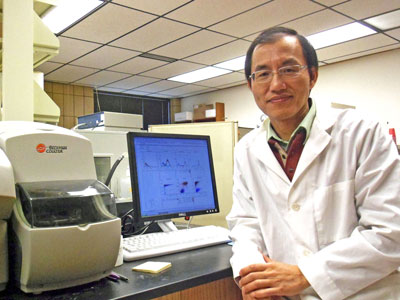 Scientists have been systematically studying the effects of transition metal oxide nanoparticles on human lung cells. These nanoparticles are used extensively in optical and recording devices, water purification systems, cosmetics and skin care products, and targeted drug delivery, among other applications.
Scientists have been systematically studying the effects of transition metal oxide nanoparticles on human lung cells. These nanoparticles are used extensively in optical and recording devices, water purification systems, cosmetics and skin care products, and targeted drug delivery, among other applications.
Jan 28th, 2014
Read more
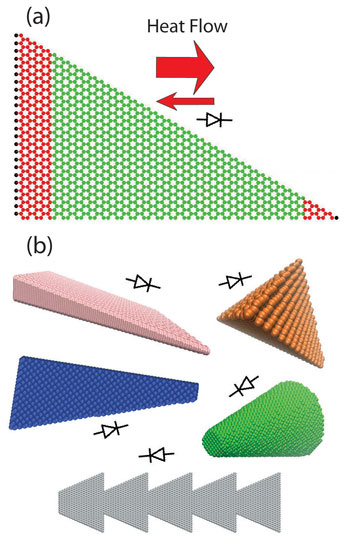 Researchers are proposing a new technology that might control the flow of heat the way electronic devices control electrical current, an advance that could have applications in a diverse range of fields from electronics to textiles.
Researchers are proposing a new technology that might control the flow of heat the way electronic devices control electrical current, an advance that could have applications in a diverse range of fields from electronics to textiles.
Jan 28th, 2014
Read more
University of Houston researchers have developed a new stretchable and transparent electrical conductor, bringing the potential for a fully foldable cell phone or a flat-screen television that can be folded and carried under your arm closer to reality.
Jan 28th, 2014
Read more
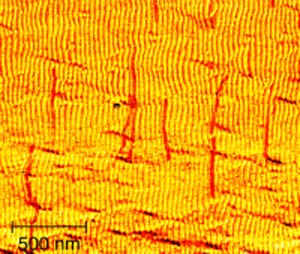 Da die anhaltende Miniaturisierung elektronischer Bauelemente bald an ihre physikalischen Grenzen st��t, suchen Forscher nach neuen Herstellungsmethoden. Einen aussichtsreichen Ansatz liefert DNA-Origami, bei dem sich Einzelstr�nge des Biomolek�ls selbstst�ndig zu beliebig geformten Nanostrukturen zusammenfinden.
Da die anhaltende Miniaturisierung elektronischer Bauelemente bald an ihre physikalischen Grenzen st��t, suchen Forscher nach neuen Herstellungsmethoden. Einen aussichtsreichen Ansatz liefert DNA-Origami, bei dem sich Einzelstr�nge des Biomolek�ls selbstst�ndig zu beliebig geformten Nanostrukturen zusammenfinden.
Jan 28th, 2014
Read more
Japan's National Institute for Materials Science (NIMS) and the Swiss Federal Laboratories for Materials Science and Technology (Empa) have signed a 5-year collaborative agreement to co-publish the open access journal Science and Technology of Advanced Materials (STAM). Their goal is to make STAM one of the world's leading publications in materials science.
Jan 28th, 2014
Read more
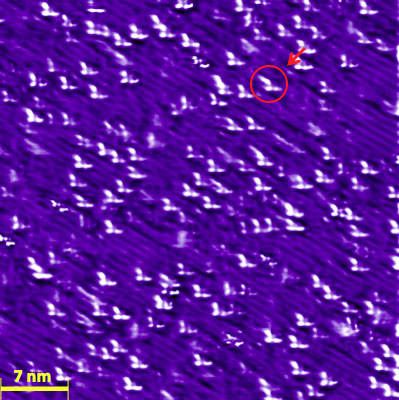 Nearly 30 years after the discovery of high-temperature superconductivity, many questions remain, but an Oak Ridge National Laboratory team is providing insight that could lead to better superconductors.
Nearly 30 years after the discovery of high-temperature superconductivity, many questions remain, but an Oak Ridge National Laboratory team is providing insight that could lead to better superconductors.
Jan 27th, 2014
Read more
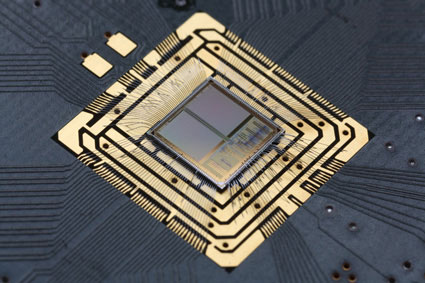 Scientists from Berlin and Heidelberg use artifical nerve cells to classify different types of data. Thus, they may recognize handwritten numbers, or distinguish plant species based on their flowers.
Scientists from Berlin and Heidelberg use artifical nerve cells to classify different types of data. Thus, they may recognize handwritten numbers, or distinguish plant species based on their flowers.
Jan 27th, 2014
Read more
A team of researchers at the University of Toronto has discovered a method of assembling "building blocks" of gold nanoparticles as the vehicle to deliver cancer medications or cancer-identifying markers directly into cancerous tumors.
Jan 27th, 2014
Read more
 A new theoretical model may hold the key to methods for developing better materials for solar cells. The scientists say the model could lead to new solar cell materials made from improved blends of semiconducting polymers and fullerenes.
A new theoretical model may hold the key to methods for developing better materials for solar cells. The scientists say the model could lead to new solar cell materials made from improved blends of semiconducting polymers and fullerenes.












 Subscribe to our Nanotechnology News feed
Subscribe to our Nanotechnology News feed